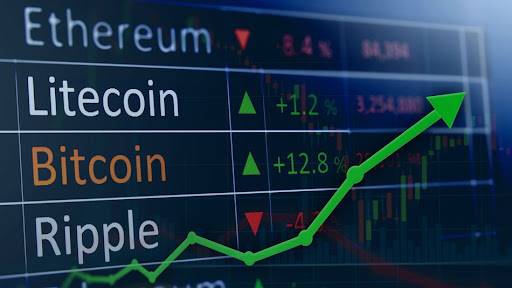Cryptocurrency fluctuations range from 5%-10% per day. This is considered rather high relative to the traditional currencies like the USD that experience a daily fluctuation of 0.5%-1% only. In other words, while traditional investment methods are more stable and reliable, the crypto market is quite volatile in nature.
Though volatility of markets is advantageous to earning big profits against the investments, especially if users learn how to use the so-called crypto engines, a catalytic event of minuscule scale can trigger a price fluctuation over a range of 50% to 200%-300%. It, therefore, is imperative that we understand the reasons for the labile nature of the crypto markets, so as to establish their relevance over trading liquid assets.
Here are a few pertinent explanations for the crypto market volatility, though it would be hard to point a needle to just one.
Emerging market size
Just a decade old, the cryptocurrency market is currently valued to be $250B, in comparison to $5T per day of the foreign exchange market. Despite catching up with the momentum and gaining rapid popularity, the market is quite unexplored.
Therefore, while foreign exchange markets can maintain their stability even during times of massive movements, crypto trade gets influenced dramatically even with the slightest adjustment. Thus, when a whale makes a huge transaction, it impacts the entire market into a frameshift in a matter of hours!
Supply and Demand of Purely digital assets

Evolving Technology
Blockchain technology and the other alternative technologies that drive the cryptocurrency markets are constantly evolving. Problems related to its scalability, validation of smart contracts over the expected timeframes keep resurfacing time and again, and consistently enforcing its downfall.
Fragile Investors
The rising popularity of cryptocurrencies has invited investors of diverse backgrounds to venture into them for investments. One doesn’t need to have expertise in the subject to be able to play in the field. With the hopes of making rapid gains comes an unmatched impatience. This leads to frequent entry and exit of the investors in the trade realms, increasing its volatility.
 Lack of regulation
Lack of regulation
Market manipulation is the direct consequence of a lack of regulation. Creating a sphere of illusion by misrepresenting the market behavior, simply increases the unpredictability factor of the markets. This increases the anxiety and chaos among the investors, making them increasingly volatile.
Speculative asset value
Cryptocurrencies are not really involved in returning the dividends, the evolution of the technology (that, anyways, requires an insignificant proportion of the total value), and above all, in earning revenue or employing the workforce. This is why it is known to have no inherent value of its own, thriving entirely on speculation. This behavior either leads to a sudden capital influx, or drainage- another factor that increases its fickleness.
Lack of institutional capital
Despite the fact that impressive institutional capital companies- hedge funds and high-net-worth institutions are believers of cryptos, a large proportion of the venture capital remains undeniably on the sidelines of the crypto boundaries.
Conclusion
Cryptocurrency can evolve over a larger sphere owing to a regularized market, a mature outlook, a greater investor diversity, improvised transaction technology, and merchant-accessible transactions. This would relieve the stress of volatility on the market, making it a reliable sphere, gradually improving its value over time.

Founder Dinis Guarda
IntelligentHQ Your New Business Network.
IntelligentHQ is a Business network and an expert source for finance, capital markets and intelligence for thousands of global business professionals, startups, and companies.
We exist at the point of intersection between technology, social media, finance and innovation.
IntelligentHQ leverages innovation and scale of social digital technology, analytics, news, and distribution to create an unparalleled, full digital medium and social business networks spectrum.
IntelligentHQ is working hard, to become a trusted, and indispensable source of business news and analytics, within financial services and its associated supply chains and ecosystems


 Lack of regulation
Lack of regulation









